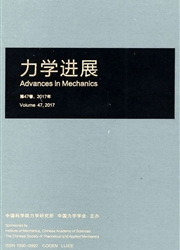

 中文摘要:
中文摘要:
自20世纪中叶开始,在生物学,物理学,力学,数学的边缘领域逐渐形成了一门新兴的交叉学科——数学生物学,它将生物系统视为一个复杂的动力学系统,从应用数学角度进行深入研究,其研究课题目前已远远超出人们熟知的牛物力学领域.这门学科的迅速发展正深刻地政变着古老的,以观察、分类、实验为特征的传统生物学的面貌.本文旨在探讨数学生物学中的一个具有重大理论与实际意义的课题方向:植物系统生长、发育、演化动力学过程的数学、物理模型研究;介绍近年来国内、外在这一方向的研究动态;并说明在对此课题的研究方法上,动力学数学模型与统计学模型以及计算机模拟的根本区别.进而提出以植物根系生长过程的研究为突破口,说明若将生长系统处理成一个热力学开放系统,从不可逆过程热力学、植物细胞学与植物生理学原理出发,结合植物内部组织的微观结构的确寺,人们有可能建寺起一套合适的描述系统内部物质、能量与信号输运的控制微分方程;再通过运用强有力的非线性科学、应用数学的方法求解所得微分方程式,并将理论预测与实验观察结果进行比较,人们可深入探索与更好地理解根系对土壤中的水分与营养物质吸收机制和根系生长过程中所出现的种种生物界而不稳定性现象.
 英文摘要:
英文摘要:
Since the middle of the 20-th century, a new interdisciplinary subject is gradually formed at the edge of fields of biology and physics, mechanics and mathematics, the so-called mathematical biology. It treats the biological, living system as a complex dynamics system and aims at a thorough research from the angle of applied mathematics. The topics currently investigated in mathematical biology are far beyond the area of bio-mechanics that people are familiar with. The rapid growth of this subject profoundly changed the feature of the ancient, traditional that is mainly dealing biology with the observations, classifications and experiments as its characteristics. The aim of this article attempts to introduce and discuss a research direction, in mathematics biology——mathematical physical modeling studies of growth, development and evolution of the plant system. It is evident that such a research direction is vital both theoretically and practically. In doing so, the article briefly reviews the research activities along this direction in China and in other countries during the recent years, elucidates the essential differences between the dynamical mathematical modeling, statistical modeling and computer simulation, which have been applied in the investigations of this subject. The present article further selects the topic of growth of the plant root system as the break-through point of the investigation. It demonstrates that by treating the system of root growth as a thermo-dynamical open system, based on the principles of irreversible thermo-dynamics, plant cytology and physiology, combining the microstructure of the plant internal organization, one may establish a system of governing differential equations, that properly describes the macroscopic transport processes of the internal materials, energy and signals in the system. Through solving these equations with the powerful methods of nonlinear science and applied mathematics, and comparing the theoretical results obtained with the experimental observ
 同期刊论文项目
同期刊论文项目
 同项目期刊论文
同项目期刊论文
 期刊信息
期刊信息
